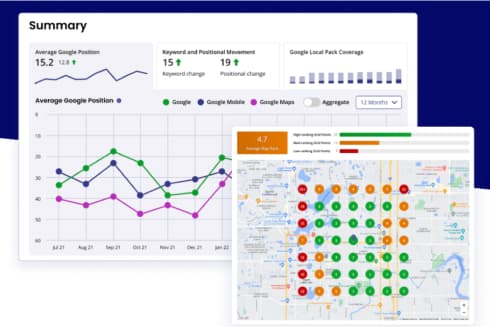UI and UX Designs: Discover the Differences
In the world of digital design, the terms UI and UX are frequently used, often interchangeably. However, while they are closely related, they represent different and complementary aspects of the product creation process. Understanding the difference between UI (User Interface) and UX (User Experience) is crucial for designing solutions that are not only visually appealing but also functional and user-centered.
In this article, we will explore what each of these concepts means, how they integrate into the design process, and why it is essential to distinguish between them to create successful digital products.
What is UX Design?
User Experience (UX) design focuses on how a person feels when interacting with a system. This can be a website, an application, software, or any other digital product. The main goal of UX design is to enhance user satisfaction by improving usability, accessibility, and interaction with the product.
The UX design process involves a deep understanding of users, their needs, values, skills, and limitations. UX designers conduct thorough research, such as interviews, surveys, and usability testing, to gather information about user behaviors and expectations. This information is used to create wireframes, prototypes, and user flows that guide product development.
Moreover, UX design is not limited to the creation stage of the product. It also involves continuous evaluation and improvement based on real user feedback and interactions. UX is about creating products that are not only functional but also provide a pleasant and meaningful experience for the end user.
The Role of UX Design in Digital Marketing
User Experience (UX) design plays a fundamental role in digital marketing as a good user experience can significantly improve brand perception and increase conversion rates from visitors to customers. In digital marketing, UX design focuses on creating digital experiences that are intuitive, and enjoyable, and facilitate user interaction with the brand.
One of the most important aspects of UX design in digital marketing is optimizing websites and applications to be user-friendly and efficient. A well-designed website should guide the user smoothly to the information they are seeking and facilitate actions the company wants them to take, such as making a purchase, signing up for a newsletter, or completing a contact form. An effective UX design can reduce bounce rates and increase conversion rates, leading to a higher return on investment for digital marketing strategies.
Additionally, UX design is crucial for customer retention. A good user experience fosters loyalty and repeat business, as users tend to return to websites and applications they find easy to use and enjoyable. UX analysis tools, such as usability testing and heat maps, allow designers and marketers to identify and address issues that may affect the user experience, thereby improving customer satisfaction and strengthening the brand relationship.
Finally, in the realm of digital marketing, UX design also extends to search engine optimization (SEO). Search engines like Google value positive user experiences and tend to rank websites higher that offer intuitive navigation, fast loading times, and mobile-friendly designs. By improving UX, companies not only provide a better experience for their users but also increase their visibility and reach in search results.
What is UI Design?
User Interface (UI) design refers to the creation of interfaces through which users interact with digital products. This includes everything a user can see and interact with on a screen, such as buttons, icons, menus, typography, colors, and graphical elements. The main goal of UI design is to make the interaction with the product as intuitive and efficient as possible.
The UI design process begins with creating a coherent and visually appealing structure that facilitates navigation and use of the product. UI designers work on the layout of visual elements and the overall aesthetic consistency of the product. This includes choosing color palettes, creating custom icons and graphics, and designing typography and buttons that are easy to understand and use.
In addition to aesthetics, UI design also focuses on functionality and how users interact with visual elements. This involves creating interactive elements that respond predictably and pleasantly to user actions, such as clicks, scrolls, and touches on touch screens. UI designers use user-centered design principles to ensure that the interface is not only visually attractive but also intuitive and easy to use.
UI design also includes creating prototypes and conducting usability testing to ensure that the interface functions correctly and meets user expectations. Through continuous iterations and feedback, UI designers refine the interface to improve the overall user experience.
Fundamental Differences Between UX Design and UI Design
- Focus and Objective:
- UX Design (User Experience): UX design focuses on the overall experience of the user interacting with a product or service. Its main goal is to enhance user satisfaction through ease of use, accessibility, and efficiency in interaction. UX designers conduct extensive user research and create user flows, wireframes, and prototypes that guide product development.
- UI Design (User Interface): UI design, on the other hand, focuses on the visual appearance and functionality of the interface that the user interacts with. Its goal is to make the interaction intuitive and visually appealing through the arrangement of graphical elements, color choices, typography, and the creation of buttons and menus. UI designers work on aesthetic details and how they influence the user experience.
- Process and Tools:
- UX Design: The UX design process includes user research, data analysis, persona creation, wireframe and prototype development, and usability testing. Common tools for UX designers include prototyping software like Sketch, Adobe XD, and Figma, as well as user analysis and usability testing tools like Hotjar and UserTesting.
- UI Design: UI design focuses on the visual and graphical aspects of the interface. UI designers use tools like Adobe Photoshop, Illustrator, Sketch, and Figma to create detailed graphical elements and high-fidelity mockups. They also work on implementing design systems and style guides to ensure visual consistency throughout the product.
- Results and Deliverables:
- UX Design: Deliverables from UX design include user experience maps, user flow diagrams, wireframes, interactive prototypes, and usability testing results. These deliverables provide a clear vision of how the product should function and how users will interact with it. The goal is to ensure that the final product is useful, efficient, and satisfying for users.
- UI Design: Deliverables from UI design include high-fidelity mockups, style guides, UI kits, and individual graphical elements. These deliverables focus on the product’s appearance and how visual elements should be implemented. The goal is to create an attractive and consistent interface that facilitates user interaction and enhances the overall visual experience.
Benefits of Using UX and UI Design Together
- Comprehensive User Experience: Utilizing UX and UI design together ensures a comprehensive user experience that combines functionality and aesthetics. UX design ensures that the product is intuitive, easy to use, and meets user needs, while UI design focuses on making the interface visually appealing and consistent. When both are properly integrated, it creates a smooth and enjoyable user experience, increasing user satisfaction and loyalty.
- Increased Development Efficiency: Collaboration between UX and UI designers during product development can significantly enhance process efficiency. UX designers establish the structure and flow of the product, providing a solid foundation upon which UI designers can build an attractive interface. This collaboration reduces the need for frequent revisions and changes, as both design aspects are aligned from the start, accelerating development time and product launch.
- Improved Conversion Rates: A design that effectively combines UX and UI can positively impact the conversion rate of a digital product or service. A well-executed UX design ensures that users can navigate and complete actions efficiently, while an appealing UI design captures and retains their attention. Together, these elements can guide users towards desired actions, such as making a purchase, signing up for a service, or completing a form, thereby improving conversion rates and return on investment.
- Reinforcement of Brand Identity: Integrating UX and UI also helps strengthen brand identity. A consistent and aesthetically pleasing UI design, aligned with UX design principles, ensures that user interaction with the product is memorable and reflects the brand’s values and personality. This visual and functional consistency creates a lasting and positive impression on users, fostering brand loyalty and differentiating it from competitors.
Conclusión
In conclusion, while User Experience (UX) design and User Interface (UI) design focus on different aspects of digital product creation, both are essential and complementary for developing successful solutions. UX design focuses on functionality and user satisfaction, ensuring that interaction with the product is intuitive, efficient, and enjoyable. On the other hand, UI design addresses aesthetics and visual interactivity, creating attractive and coherent interfaces that facilitate product use.
Working together, UX/UI design offers numerous benefits to businesses. A comprehensive user experience not only enhances user satisfaction and loyalty but also increases conversion rates by effectively guiding users through desired actions. Additionally, collaboration between UX and UI during product development boosts efficiency and reduces time to launch. Finally, a well-designed interface reinforces brand identity, creating a lasting and positive impression on users.
By effectively integrating UX and UI design, businesses can create digital products that not only meet functional and aesthetic expectations but also make a significant and positive impact on the user experience, strengthening their market position and customer relationships.












